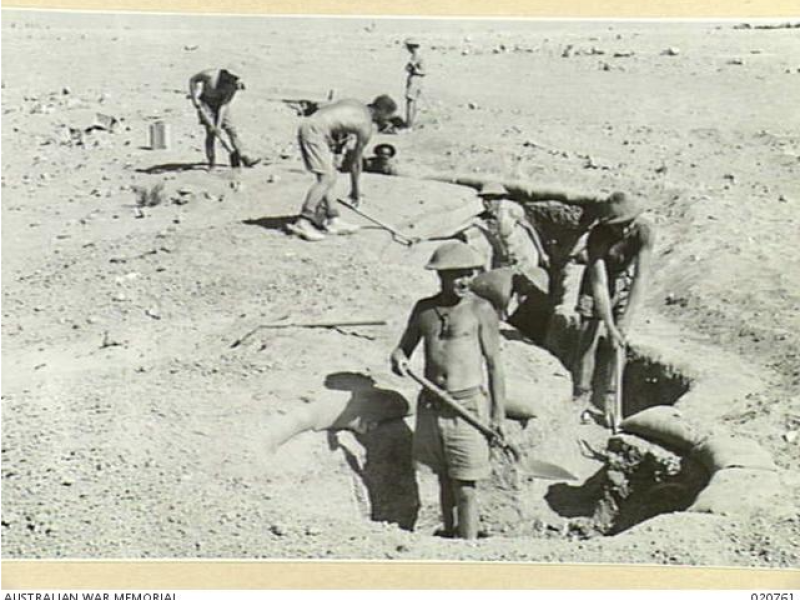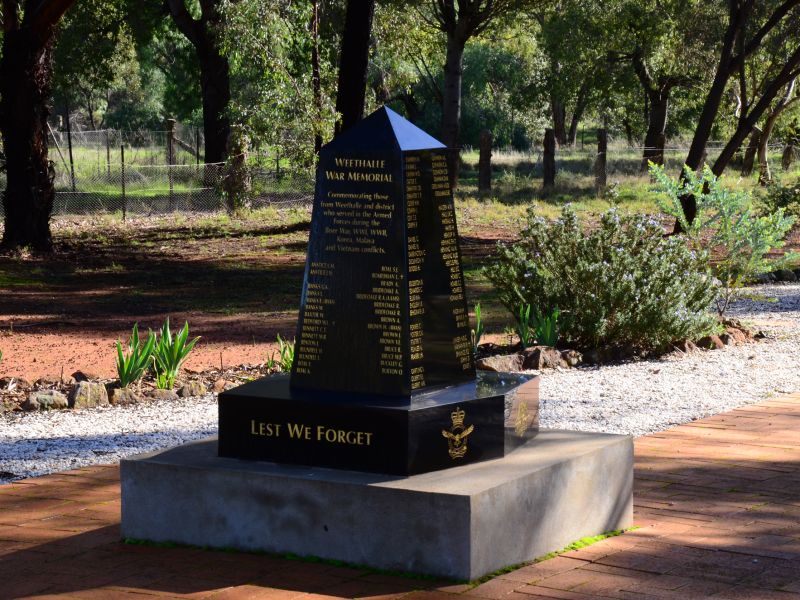Private Robert Paginton, 2/13th Battalion, AIF
Robert Paginton was born on 8 August 1907, the youngest of 11 children born to John and Eliza Paginton of Malmesbury in the south-west of England. In September 1924, at the age of 16, Paginton travelled by himself to Australia, and he took up work as a farm labourer on a property called “The Peak” at Binya, in the central west of New South Wales. He later lived in nearby Weethalle.
In July 1940, Paginton travelled to Wagga Wagga and enlisted in the Australian Imperial Force. He trained with the 13th Infantry Training Battalion at Wagga Wagga and Tamworth, and in April 1941, embarked for service overseas.
Sailing for Egypt, Paginton joined the staging camp at Amira, and in early June moved to Tobruk with the 2/13th Infantry Battalion.
The second year of the war had begun with a series of impressive British and Commonwealth successes against the Italians in Libya. Australian troops led the advance. But a rapid German offensive quickly reversed these early victories. All that stopped the Germans’ march on Egypt was the defiant garrison at Tobruk.
Paginton came to Tobruk just as the German Afrika Corps, commanded by Lieutenant General Erwin Rommel, moved to surround the North African port, subjecting Australian forces there to a prolonged siege.
For eight long months, surrounded by German and Italian forces, the men of the Tobruk garrison, mostly Australians, withstood tank attacks, artillery barrages, and daily bombings. They endured the desert’s searing heat, the bitterly cold nights, and hellish dust storms. They lived in dug-outs, caves, and crevasses.
The defenders of Tobruk did not surrender, they did not retreat. Their determination, bravery, and humour, combined with the aggressive tactics of their commanders, became a source of inspiration during some of the war’s darkest days. In so doing, they achieved lasting fame as the “Rats of Tobruk”.
On 22 June 1941, during the chaotic nature of the fighting at Tobruk, that Paginton died of wounds received in action.
It is unclear exactly what happened to him. He was likely wounded by enemy mortar fire, or by setting off a booby trap set by German and Italian troops in the areas surrounding Tobruk.
Robert Paginton was 33 years old. He had been in North Africa for less than two months.
Today, his remains lie buried at the Tobruk War Cemetery in Libya, with more than 2,250 Commonwealth servicemen of the Second World War.
His family in England, who he had not seen since he was 16 years old, chose the following epitaph for his tombstone: “Not a day do we forget you, in our hearts you’re always near”.
David Sutton, Historian, Military History Section
Image: A memorial to the heroes of Tobruk.
- Australian War Memorial https://www.awm.gov.au/collection/C2755522

 Australian War Memorial
Australian War Memorial
